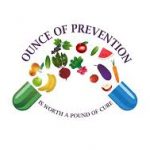As an internist, I’ve been fielding a lot of COVID-related questions lately. It’s the medical topic on everyone’s mind. In fact, I’ve been telling my patients lately that I feel more like a COVID doctor some days than a primary care doctor.
The question patients ask most is, “Can I get tested for COVID?” They want to know if their recent nasal congestion means they have Coronavirus. Or they want to rule out Coronavirus so they can see friends or grandkids. Several people want testing so they can be allowed to travel to states with restrictions. Some want testing because they were around new people and are afraid they were exposed to Coronavirus.

Understandably there’s a lot of fear driving these requests. And you can make a case that they’re all valid, since more testing will identify more cases, which could potentially limit spread. But we also need to understand the limitations of these tests before we undergo testing so that we know how to interpret the results and understand what actions we can take based on the results.
Most people tend to take test results at face value- that is, they accept the results as always true. But there’s virtually no such thing as a test that is 100% accurate almost anywhere in medicine. Some tests come close to 100% for true positive or true negative results, but not both. So knowing how to interpret results is very important.
To test for COVID, the only reasonable outpatient test we currently have is a nasal swab that is sent to a lab. Saliva tests and rapid tests are available, but we are not sure how effective they are yet. Antibody tests are also available, but these don’t tell you anything about active infection or risk of spread, so I won’t go into these here.
Unfortunately, the nasal swab is far from a perfect test. First, we don’t have a true standard test for comparison, so we don’t know the actual predictive value of the nasal swab. In other words, since there is no clear “near-perfect” test for comparison, it’s difficult to test the accuracy of the nasal swab. The reported ranges vary from 65-95% sensitive, though most likely it falls somewhere around 75-80% negative predictive value, meaning that you can be 75-80% certain that a negative test means you don’t have COVID.
Put a more concerning way, the test misses about ⅕ to ¼ of people who are infected with COVID. That’s a lot.
In addition, the results can take five days or more sometimes to come back, so an infected person can spread the disease for days while waiting for the report. And access to testing is still limited in parts of the U.S.
The best test we currently have leaves a lot to be desired. This is important to remember when we are making choices about how we act in relation to others.
To be clear, I am not advocating against testing. On the contrary, I believe COVID testing is crucial to controlling or even ending this pandemic. A test that misses ¼ of all infections is still good enough on a public health level to identify hot spots or new outbreaks. Also, while a negative COVID test may not be accurate, a positive test is nearly 100% certain to identify an active infection. Because of these factors, even with our current limited technology, we should be massively increasing the level of testing done in this country to help limit further spread.
But to an individual, the results of COVID testing need to be interpreted with caution. A positive test can safely be assumed to indicate you have COVID. But a negative test is trickier. If you have symptoms and/or an exposure to COVID, you can’t consider yourself out of the woods with a negative test. In fact, if you have symptoms or a known exposure, you should assume you have COVID regardless of the test results, and act accordingly.
Many people are taking negative tests at face value, and assuming they can safely see family members or travel. This is a dangerous assumption that is likely leading to further spread of COVID. If you have enough of a suspicion to get tested, meaning that you are presenting with COVID-like symptoms or suspect you may have been exposed, then you should anticipate quarantining for 14 days regardless of the results.
Now you’re probably thinking that many states, universities and employers are accepting negative COVID tests to enter, so the test must be pretty good. However, these state and organization-level policies are based on population management, not on individuals, and there is an economic component to their decisions.
More COVID test methods are currently being developed and evaluated, so hopefully we will have better and more tests available soon. Until then, feel free to get tested, but don’t let a negative test allow you to let down your guard. The most appropriate treatment is prevention, so wear a mask, maintain physical distancing, and limit your time around others. The best test is the one that isn’t needed!
Good luck, good health, and stay safe!

